People often love to work hard, but they can also gain strength by spending time in their chosen sanctuaries.
Being in such places can help them to relax and see things perspective. They can then make good quality decisions about shaping their future.
Looking at your own life and work, where are your sanctuaries? Let’s consider how to make good use of your time in such places.
Clarifying Your Sanctuaries
Where are your sanctuaries? Where do you feel at peace? Where do you go to make sense of the world?
Perhaps you have a favourite place at home, like to walk in the woods or have a hideaway at work. Perhaps you immerse yourself in a creative activity – such as writing, painting or gardening.
Perhaps you talk with soul mates. Perhaps you find other ways to re-centre in both your personal and professional life.
People use sanctuaries in different ways. Some use them to find solace, feel safe or switch-off.
Some use them to catch-up on sleep, recharge their batteries or regain strength. Some use them to generate ideas, get stimulation and be creative.
If you wish, try tackling the exercise on this theme. This invites you to do the following things.
Describe the sanctuaries you have in your personal and professional life.
Describe the specific benefits you get from spending time in these sanctuaries.
Making Good Use
Of Your Sanctuaries
How much time do you spend in your sanctuaries? How do you use this time?
Sometimes you may simply relax. Sometimes you may choose to reflect, make sense of experience and look forward to the future.
Some people use the weekends for revitalisation. They may create time for gardening, running, playing music, sharing adventures with their family or whatever.
Some people find that working days can be more difficult, especially if they are in an open plan office. One person said:
“Two years ago we moved everybody out of their small offices into open spaces
“The upside is that you can now see everybody. The downside is that you can also hear everybody.
“My job calls for periods of concentration. So now I get in at 7.45 and do an hour’s work. The next step is to spend time with the managers till around 9.30.
“Around mid-morning I take my laptop downstairs to the canteen that we share with other companies.
“People can come down and chat or reach me by mobile. But I need time to do creative work.
‘I return to my desk around lunchtime and work there most of the afternoon.”
Good decision makers often create their own version of a sanctuary when needing to make a tough decision. They buy time to clarify their thoughts. Faced by a challenge, they may say to people:
“I am sure we can solve this problem. Just give me a few minutes and I will get back to you with some possible ways forward.”
They may then spend time in their chosen sanctuary, even if this is simply going for a walk. Doing some slow thinking – and seeing things in perspective – can help people to make better decisions.
If you wish, try tackling the exercise on this theme. This invites you to do the following things.
Describe how you can, if appropriate, spend more time in your sanctuaries.
Describe the specific things you can do to make good use of your time in these sanctuaries.
Moving On From
The Sanctuaries
Spending time in a sanctuary is great, but it is vital to know when to emerge into the world. What signals tell you that it is time to move on?
Many people need to spend time in a sanctuary, for example, after experiencing a setback. This provides them with the chance to rest and recover.
People may go through the classic stages of shock, denial, paralysis, anger, hurt and healing. Gathering new strength, they begin to shape their future. They set specific goals, work hard and achieve success.
Sanctuaries are fine for a while, but then it is important to begin exercising your muscles, otherwise the body atrophies. It can then be helpful to emerge from the sanctuary and begin shaping your future.
Different people get different signals regarding when it is time to move forwards. Some feel restless. Some see opportunities and want to get moving, otherwise they will miss the chance.
People often aim to get an early success when emerging from their sanctuary. This builds momentum and confidence. They then develop a daily rhythm – a routine – that is likely to deliver positive results.
Looking at your own life, when do you feel ready to emerge from your sanctuaries? What are the signals you get in your mind or body? What do you then do to move into action and get a success?
If you wish, try tackling the exercise on this theme. This invites you to do the following things.
Describe the specific signals you get that tell you it may be time to move on from the sanctuaries.
Describe the specific things you then do – or can do – to move on and, if appropriate, get a success.



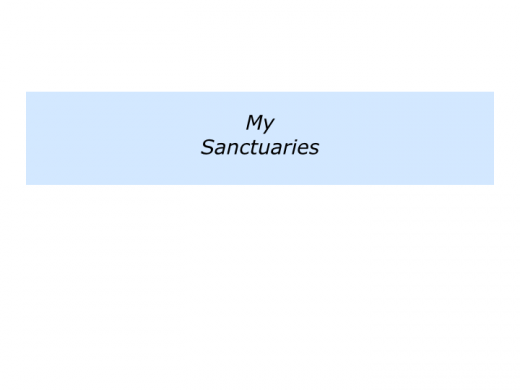
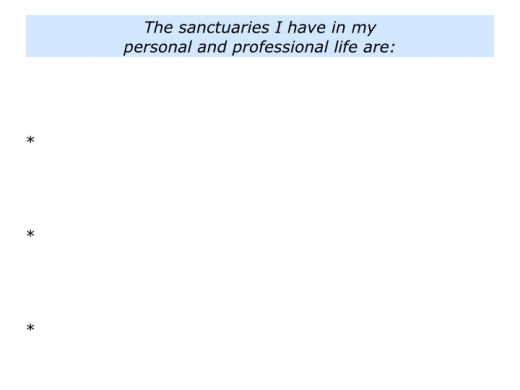
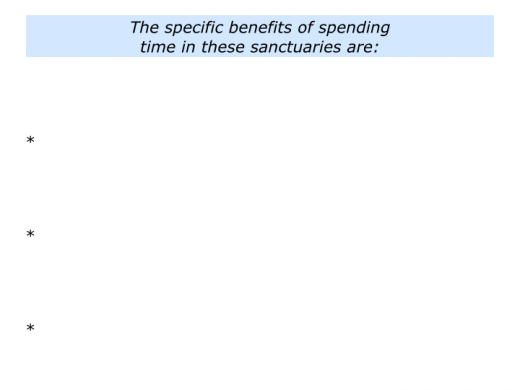
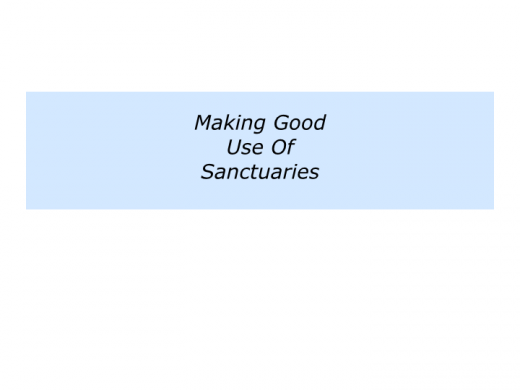
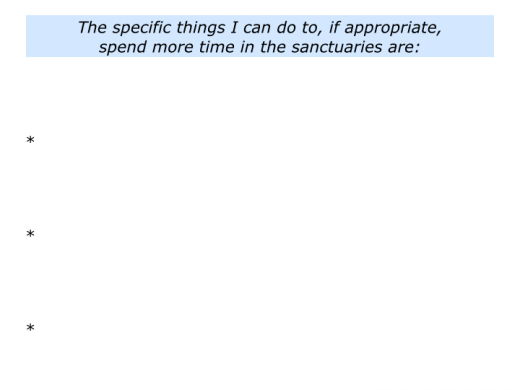
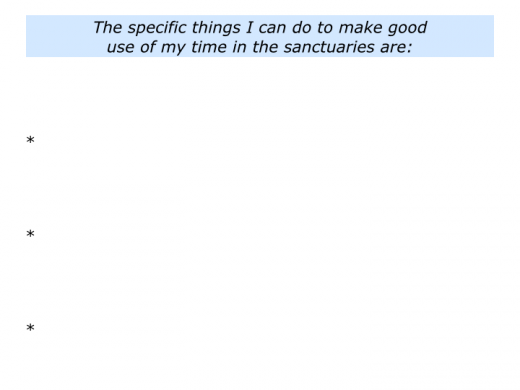
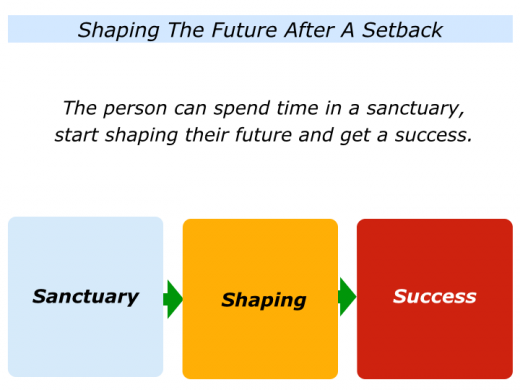
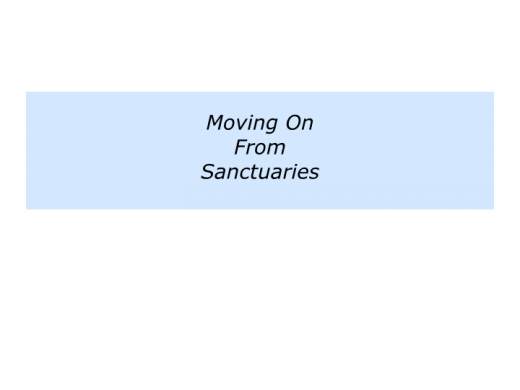
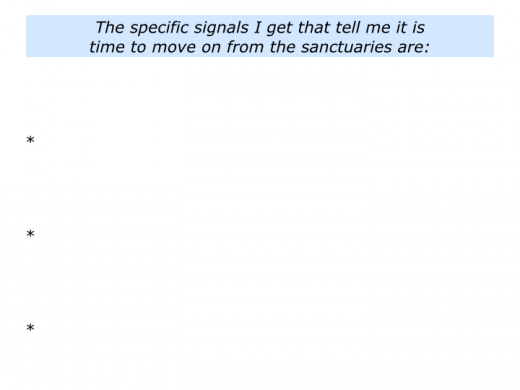
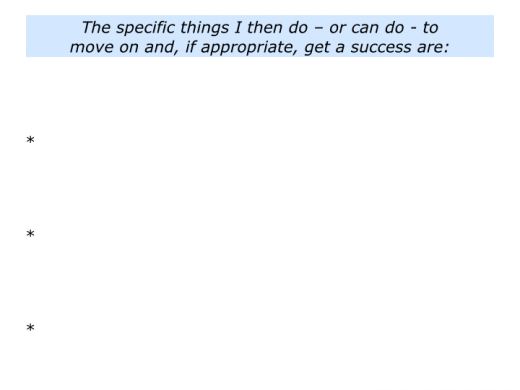




Leave a Reply